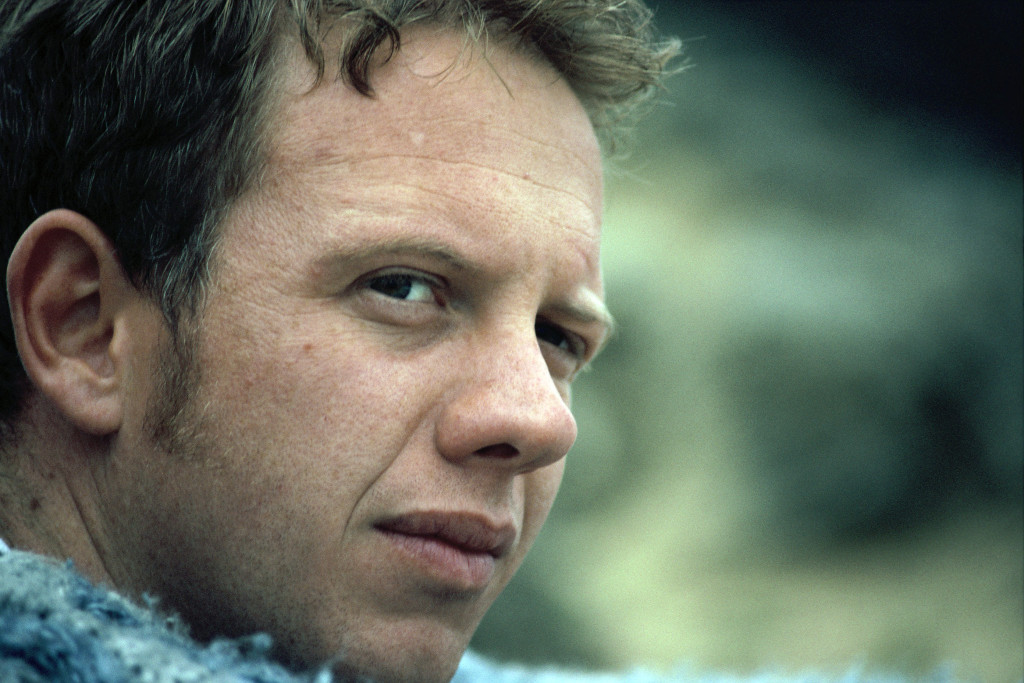Ge-trans-for-meer was Johannes Kerkorrel’s third solo album.
The album’s opening track was “Sê Sê”, in which Rabie exhorted the listener to “Say Say” a prayer for various downtrodden people, such as “the tramp without a bed” and “the school girl, ugly and fat”. In particular Rabie sang about the “AIDS sufferers that are dying” and “The gay broken by ideology, defenceless, crying on [their] knees”. The song contrasted the lives of poverty-stricken South Africans with those of the elite, who were living it up on the red carpet; referred to in the song as “die vet sotte op die rooi tapyt” (fat bastards on the red carpet).
In this song, Rabie was clearly returning to his roots as a protest singer. Only, the target of his invective was no longer the apartheid government. He now criticised the ANC government and expressed his disquiet about the situation in South Africa after the democratic elections.
Coincidentally around this time, graffiti appeared on a wall in Johannesburg that read “Re-release Mandela – the disco version”. The graffiti reflected the disaffection felt by many at the time regarding the new social order, which after the initial euphoria, appeared to be floundering when confronted with the realities of having to deal with the social disparity that had been created by years of apartheid.
Rabie was ahead of his time. His concerns about the effects of global warming (expressed in the song Blou Aarde on the Bloudruk album) as well as the growing chasm between the haves and the have nots, preceded the Occupy Wall Street movement by some decades.
The Occupy Wall Street movement was later supported by musicians such as Tom Morello (Rage Against the Machine) and Serj Tankian (System of a Down). Morello described the movement’s value as a way “to inject into the global dialogue the horrific economic inequality that plagues the planet” and a way to focus on the “grotesque global poverty and the growing inequality in our country.”
The Occupy Wall Street movement began in September 2011 as a protest against economic inequality in the US. Protestors occupied Wall Street for months using the catchphrase “We are the 99 percent” which referred to income disparity that resulted in a tiny minority of wealthy people owning most of the world’s wealth.
Eventually protestors were dispersed when the Mayor of New York, Michael Bloomberg instructed police to raid the park and break up the encampment in November 2011.


1 comment for “Ge-trans-for-meer : How JK foreshadowed Occupy Wall Street”